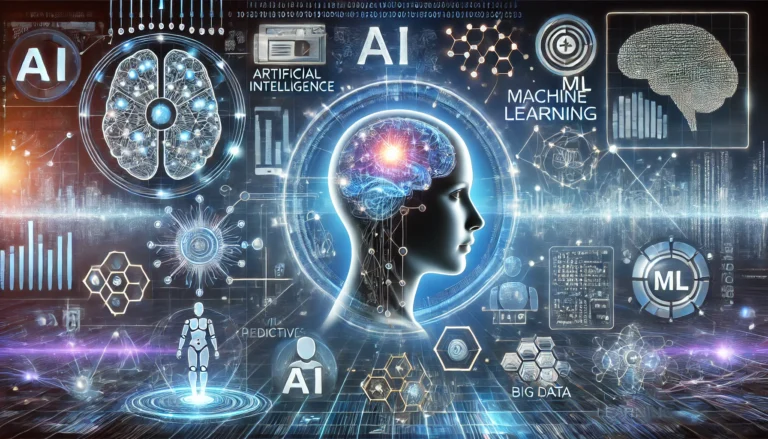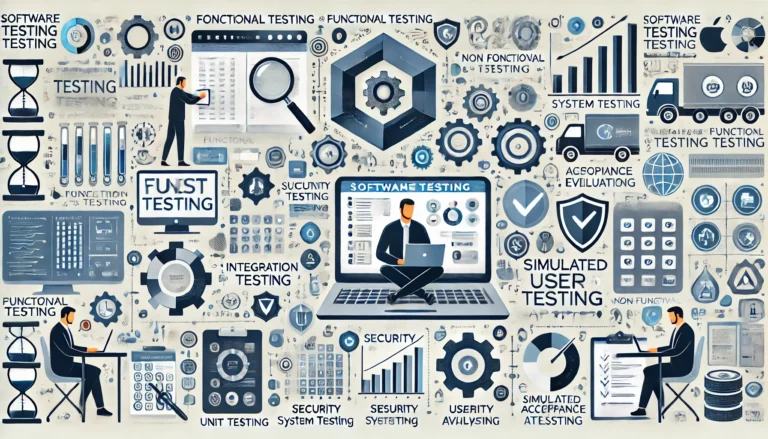Artificial intelligence (AI) is not merely a buzzword in the world of technology; it is a fundamental component of efficiency and innovation. The capacity to create a potent AI model becomes crucial as organizations and sectors depend more and more on AI to power their operations and decision-making procedures. Understanding AI’s foundational ideas is the first step on the path, which continues to the useful elements of creating models. Learn how to build an AI model so that your data-driven projects can reach their full potential.
We’ve created a thorough guide on How to Build an AI Model to help you understand the process of creating AI models. To know more in depth read this article thoroughly.
What is an AI Model?
An artificial intelligence (AI) model is a highly developed computer program created to carry out tasks like learning, reasoning, and problem-solving that normally need human intelligence. Large datasets are used to train these models so they can identify trends, make decisions, and predict outcomes without the need for direct human involvement. Artificial intelligence (AI) models may independently produce outputs that are helpful for a variety of applications, from autonomous driving and financial forecasting to image recognition and natural language processing. This is achieved by applying different algorithms to input data.
There are various phases involved in developing AI models, such as gathering data, preprocessing, training, validating, and deploying the model. Through parameter adjustments during training, the model minimizes prediction errors by learning from the data. The method used to construct an AI model might vary depending on whether it is supervised, unsupervised, or incorporates reinforcement learning. These models are highly flexible and effective tools for resolving complicated issues in a variety of fields because, once trained, they can learn from fresh data and keep improving their performance.
Types of AI Model-
Before understanding how to construct an AI model, a developer needs to first comprehend the core types of AI models:
Artificial Narrow Intelligence (ANI): ANI is especially effective at doing particular activities. Examples of ANI-capable tasks include organizing your schedule like Apple’s Siri and driving an autonomous vehicle. ANI is frequently described as “Weak AI.” Despite this name, though, there is absolutely nothing weak about its powers in its particular field. It operates with astounding accuracy and effectiveness.
Artificial General Intelligence (AGI): A hypothetical AI with cognitive capabilities akin to those of humans, AGI goes beyond ANI. This kind of AI is comparable to human intelligence in that it can learn, comprehend, and apply intelligence to a wide range of tasks. Even though AGI is still in its earliest stages, it is thought to serve as a possible link to more sophisticated AI. Intriguing discussions in tech circles have been sparked by enthusiasts’ claims that sophisticated systems such as OpenAI’s GPT-4 may exhibit indications of artificial intelligence (AGI) capabilities.
Artificial Superintelligence (ASI): This is a hypothetical type of AI that is superior to human intelligence in every way, including creativity, emotional intellect, and problem-solving ability. In each area, ASI could perform better than the brightest human intellect. Since the creation of ASI would have enormous effects on humanity, it presents major ethical and safety issues.
How to Build an AI Model?
From identifying the problem to deploying and assessing the model, there are several important processes involved in building an AI model. To help you with the process, consider the following approach:
Address the Issue: Begin by stating your goal for using AI to address the problem precisely. Make sure whether the task involves clustering, regression, classification, or any other kind of analysis. Your data gathering and model selection will be assisted by your understanding of the issue.
Collect and Prepare Data: Gather the data required to train your model. Preprocessing, data cleansing, and data collecting are all part of this step. Make sure the dataset you have is error-free and reflective of the issue. In addition, normalization, categorical variable encoding, and data separation into training, validation, and test sets are possible steps in the data preparation process.
Choose a Model: Select the right AI model according to the nature of the issue. Models like neural networks, decision trees, and linear regression may be useful for supervised learning tasks. PCA and other dimensionality reduction techniques, as well as clustering algorithms like K-means, may be ideal for unsupervised jobs. How complex the issue is and what kind of data there is will determine which model is best.
Train the AI Model: Teach the model to predict or make decisions by using the training data. The model gains knowledge about patterns and relationships from the data during training. To maximize performance, this stage entails modifying the model’s parameters and applying algorithms like gradient descent.
Analyze the Model: Make use of the test and validation datasets to evaluate the model’s effectiveness. Based on the nature of the problem, common metrics for evaluation consist of mean squared error, accuracy, precision, recall, and F1 score. How successfully the model generalizes to fresh, untested data is determined in this step.
Set the Hyperparameters: The model’s training process and structure can be adjusted by adjusting the hyperparameters. The optimal hyperparameter settings for enhanced performance can be found using strategies like grid search or random search.
Deploy the Model: After the model runs well, install it in a real-world setting so that it can predict data from the real world. This step entails integrating the model into your system or application and making sure it runs effectively and consistently.
Maintain and Monitor: After deployment, keep an eye on the model’s functionality at all times. When issues arise or the data changes, gather input and make the necessary updates to the model. Frequent upkeep guarantees the model’s long-term effectiveness and applicability.














